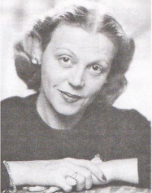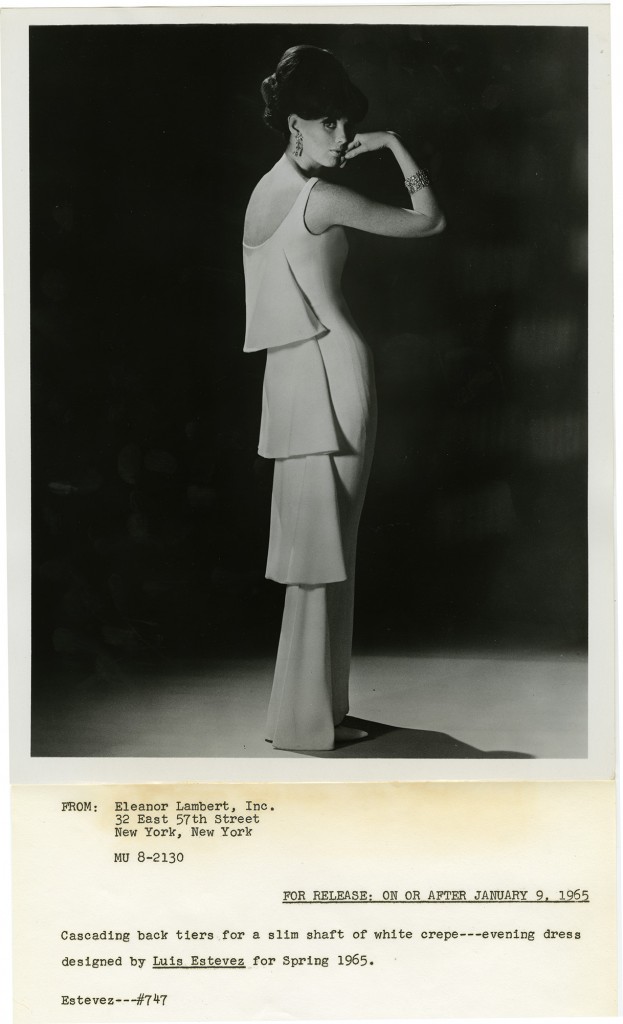
One of the most seminal figures in the history of American fashion was not, in fact, a designer at all. For more than seven decades, Eleanor Lambert (1903-2003) was American fashion’s greatest champion and advocate, pulling the strings behind the industry’s biggest names and organizations.
Born in 1903 in Crawfordsville, Indiana, Lambert was raised by her mother. Before her birth, her father had abandoned the family—which included four much older siblings—to return to his former career with the Ringling Brothers circus. Always attracted to creative endeavors, Eleanor studied art at both the John Herron Art Institute in Indianapolis and the Chicago Art Institute, all the while earning extra money on the side as a freelance fashion journalist and sketch artist.
An early marriage to a fellow classmate resulted in a move to New York City in 1925. Living in the big city was a dream come true for the plucky 22 year-old Eleanor, who, once in New York, put aside her artistic ambitions in favor of a paying position. She took a job with a public relations firm which specialized in publishing and quickly carved out a niche for herself by bringing in new clients from the art world, eventually representing the likes of Thomas Hart Benton, Isamu Noguchi and Jackson Pollock. In 1929, she helped to establish The Museum of Modern Art and two years later found herself the first Press Director for the Whitney Museum of American Art.
Lambert’s entrée into the world of fashion is a matter of debate depending on which source you consult. Lambert’s biographer, John Tiffany, states that Eleanor received a phone call from fashion designer Annette Simpson in 1932, inquiring after her services as a publicist, while nearly every other source names Lambert’s first fashion client as being Mollie Parnis. The question of which designer was on Lambert’s roster first is really a moot point in light of the fact that she soon became American fashion’s mouthpiece, representing individual designers and organizing the promotion of American fashion at-large. She launched out on her own as Eleanor Lambert, Inc. in 1935 and in 1936 divorced and married her second husband, Seymour Berkson, whom she had met while attending the 1934 Venice Biennale.
The years of WWII were a boon to Lambert’s cause. During the German occupation of Paris, the established fashion system was disrupted; American designers could no longer depend upon Paris as their font of inspiration, and the fashion industry in the United States began to develop a voice of its own. In 1939, Lambert established the New York Dress Institute, the first organization to promote the interests of American fashion. Once anonymous, designers began to emerge from behind the name of the label they worked for to become household names. To foster this atmosphere, Lambert worked in partnership with the cosmetics giant Coty, Inc. to establish the American Fashion Critics Awards in 1941, which recognized the efforts of individual designers. In 1943, she held the first Fashion Press Week, a coordinated showing of American designers en masse for members of the press that became a semi-annual event and still, to this day, serves at the template for New York Fashion Week.
 When the New York Dress Institute—which had been headed by Lambert for more than twenty years—dissolved in 1962, she took the opportunity to found the Council of Fashion Designers of America. (The same year, she also was instrumental in the organization of the American Art Dealers Association.) In 1964, she returned to fashion journalism, launching a nationally syndicated weekly column, “She”, which was renamed “Eleanor Lambert” in 1982; the column continued until the time of her death in 2003.
When the New York Dress Institute—which had been headed by Lambert for more than twenty years—dissolved in 1962, she took the opportunity to found the Council of Fashion Designers of America. (The same year, she also was instrumental in the organization of the American Art Dealers Association.) In 1964, she returned to fashion journalism, launching a nationally syndicated weekly column, “She”, which was renamed “Eleanor Lambert” in 1982; the column continued until the time of her death in 2003.
The now legendary, ‘Battle of Versailles’ fashion show, which exhibited the work of top Paris couturiers alongside the best and brightest American designers, was co-organized by Lambert in 1973 as a means to raise funds for the much-needed restoration of the Palace of Versailles.
For her dedication and herculean service to the interests of American fashion, the CFDA honored its founder with a Lifetime Achievement award in 1989, just one of many awards and recognitions Lambert would receive over the years. Lambert continued to work right up until the time of her death; Eleanor Lambert Inc. did not shutter its doors until Lambert turned 99 in 2002.
It has taken us two long years to process this collection, which is incredibly rich in both scope and content, but we are now pleased to announce that the Eleanor Lambert collection is now ready for consultation by researchers. The fifty-six linear foot collection is arranged in six separate series: Columns, Designer files, American Designer Showings, American Fashion Critics Awards (Aka Coty Awards), CFDA, and Miscellaneous which holds records pertaining to Lambert’s decades-long involvement with the Costume Institute at the Metropolitan Museum of Art, dating back to its inception in 1937. In 1947, Lambert created the Costume Institute’s annual fundraiser, The Party of the Year, which is now known at The Costume Institute Gala.
As a whole, the collection—which is made up of press materials, correspondence, records, fashion ephemera and photographs—tells the incredible story of the rise of American fashion beginning in the 1940s and its evolution into the global powerhouse that it is today. Lambert, who has been called ‘The Empress of 7th Avenue,’ succeeded in putting American fashion on the map. Nearing the end of her days, Lambert seemed content with her life’s work noting, “I am proud that I helped bring American style to the world’s attention and it is now considered an independent entity in the history of fashion.”
Eleanor Lambert passed away at the age of 100 on October 7, 2003 in her Fifth Avenue home.
5 responses to “Eleanor Lambert: The Empress of 7th Avenue”
Wonderful news! Congratulations on this accomplishment. Is there an online finding aid available for the collection?
Celia-
The finding aid will be linked to the catalog record which is forthcoming shortly. In the mean time, I can email it to you. Please let me know if you would like me to do so.
Best,
April Calahan
I saw the effect that Eleanor Lambert had on a fashion career when I looked through the archive of Madame Eta at FIT. Eta had been working on a small scale until 1944, when she hired Lambert as a publicist. After that, her designs were everywhere–in Vogue, at the Metropolitan Museum, and worn by the First Lady. What a powerhouse Lambert was!
I am overwhelmed by Lambert’s contribution to fashion. She was instrumental in shaping the entire context of fashion.
Thank you for writing this in depth article on Lambert. I am anxioous to explore her work when it is available.
[…] Special Collections has announced the availability to researchers of the papers of Eleanor Lambert. From the FIT blog: “As a whole, the collection—which is made up of press materials, […]